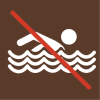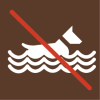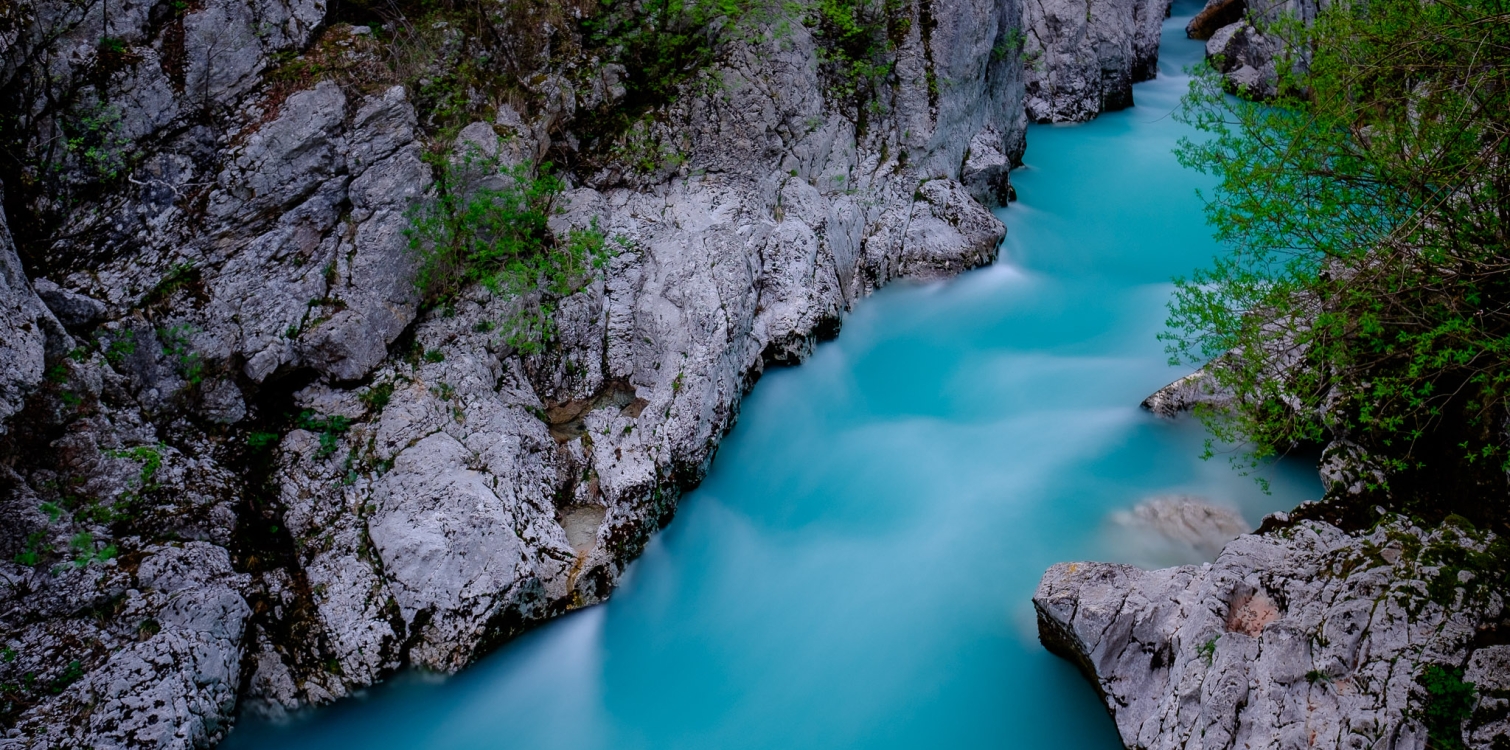Activities in the park
Is the use of drones allowed in the Triglav National Park?
The use of unmanned aerial vehicles (UAVs), or drones, in the area of the national park is restricted in line with the protective regime stipulated in the Triglav National Park Act (Official Gazette of RS, No. 52/10, 46/14-ZONC and 60/17), which prohibits flights of aerial vehicles under 1,000 feet (304.8m) above the current location or an obstacle detected during flight.
The use of UAVs without a previously acquired permit is allowed only for the purpose of protection, rescue and assistance in natural and other disasters, for the purpose of state defence, and for the purpose of the execution of police tasks.
On the basis of the consent obtained from the national park managing authority, the use of UAVs is permitted only for the purpose of:
- scientific and research activities,
- land surveying, and
- recording of films, videos and documentaries.
The use of UAVs for film and video recording is allowed in areas of infrastructure and in settlements with previously obtained consent. In the natural environment UAVs can only be used for the purpose of recording documentary and promotional films which are intended for the promotion of the park and its local communities subject to the limitations on noise for such devices and the height of flight above the areas which are classified as particularly sensitive areas of nature and where such use has no significant effect on the elements of animate nature of the national park.
The use of UAVs is also subject to other relevant legislation applicable to the entire area of Slovenia.
People create a cultural landscape in order to survive and thrive, unintentionally creating art, a magnificent mosaic of the natural environment and cultural landscape, which is particularly diverse and exciting in the area of the national park. It is important that we respect the people who live and work in the park and co-create the area’s exceptional cultural landscape.
How to plan a safe visit to the mountains?
The conditions in the highlands are different from those in the valleys and lowlands. They require preparation and, above all, knowledge and experience which cannot be acquired overnight.
Julian Alps are a demanding area to hike, so please do not underestimate their difficulty!
More tips for safe mountain visits
Choose your hike according to the time of year:
- Summer - long, warm or even hot days with rapid weather changes. Sudden cold fronts bring storms (wind, rain, lightning, sharp drop in air temperature). There are still snowfields in the high mountains which need to be managed, the risk of falling rocks is high due to the number of visitors, wind, animals, etc.
- Autumn - shorter, colder days with less risk of storms. Cold snaps are possible, which can instantly lead to winter conditions. In shaded areas, the ground is wet. Even the best footwear slips.
- Winter - very short days. Night brings icy cold. Snow cover means a risk of avalanches, slips, snowfall and fog reduce visibility and cause orientation problems.
- Spring - the mountains are still thickly covered with snow, whose properties vary greatly from morning to evening; from frozen, hard snow (slips) to heavy, wet snow (avalanches). Despite sometimes quite summer-like daytime temperatures, it is also possible to have completely wintry conditions with snow and fog.
All this variety of weather means that the Julian Alps (TNP) are extremely beautiful, but also dangerous. Every tour is an experience, but you have to know how to prepare for it.
Planning a tour:
- plans should be coordinated with psycho-physical fitness, health, experience, knowledge of the terrain, available equipment, forecasted weather (choose easier tours to start with),
- weather forecasts for mountaineers are available on the internet, radio, TV. The official weather forecast is available on ARSO METEO.
- when you are not familiar with the environment of the intended tour, expert advice or hiring a guide is essential
- Before you leave, you should leave a note telling where you are going, when you expect to return, who all is going on the tour or hike.
Equipment:
- Good footwear (tall shoes with sharp rubber tread),
- warm clothing (cardigan, wool cap, gloves, spare underwear),
- wind and rain protection (windbreaker, wind pants, bivvy bag, protective foil),
- sun protection (goggles, light cover),
- first aid (bandages, gauze, plasters),
- orienteering equipment to be able to use (map, altimeter, compass),
- adequate food and enough drinks,
- for winter conditions: ice axe, ice skis, avalanche beacon, snow shovel, avalanche probe,
For easier and safer walking, (collapsible) walking sticks or an axe are recommended whenever snow and ice are expected in the mountains.
You can also find tips for safer visit to the mountains on the Slovenian Mountaineering Association's website.
Is swimming allowed in high mountain lakes?
Swimming in the lakes in the first protection area is prohibited (Article 15, paragraph 17 of the Triglav National Park Act - Official Gazette of the Republic of Slovenia, No. 52/10). Other recreational activities are also prohibited on the lakes in the first protection area.


Where can I ride my mountain bike in the park?
The permissibility of mountain biking varies between the park's conservation areas. In general, mountain biking is allowed outside the natural environment, i.e. on existing road infrastructure intended for motorised traffic and on open forest roads.
Find mountain bike trails here
Exceptions to the general prohibition apply to cycling on farm roads, mountain trails and forest trails, which are defined in the management plan of the national park. Notwithstanding the nature conservation acceptability of cycling on the routes shown on the map forming part of the management plan, cycling is permitted only on those routes which are in agreement with the operators or owners of the routes and with the provisions of the law governing mountain paths and the provisions of the regulations governing forest tracks.
What are the most important rules mushroom pickers should follow?
Amateur and commercial collection of fungi is completely prohibited in the first and second conservation areas and in the narrower protected areas, while such activities are allowed in the third conservation area, subject to the conditions laid down in the Regulation on the Protection of Autonuclear Fungi and in the forestry and forest protection regulations, in particular the Forest Protection Regulations.
When picking, mushroom pickers must strictly observe and comply with all the prohibitions and restrictions laid down. As regards quantitative limits, the provisions of the Regulation on the protection of autotrophic fungi and the Forest Protection Regulation, which allow an individual to take up to 2 kg of mushrooms from the wild per day, must be observed. The mushrooms must be roughly cleaned directly at the site and must be collected without any tools that could damage the site or the mushroom. Visitors to the forests must be aware that their presence in the forest is a disturbance to the park's wildlife and must not cause unnecessary noise or other disturbance.
During the mushroom growing season, TNP rangers officers, in cooperation with the forest inspector, step up surveillance every year.
Is it allowed to collect herbs in the Triglav National Park?
The Triglav National Park Act does not prohibit the collection of herbs and mushrooms for personal use. However, if it is for commercial purposes, the consent of the park manager is required. The amount of herbs allowed to be collected is 1 kg/person. Also, the collection of herbs is only allowed in the third protection zone.
Is canyoning allowed in the park?
The consent of the JZ TNP must be obtained before canyoning is carried out. It is necessary to ensure the presence of a wild water rescuer in the group in case canyoning activities are carried out for profit. A maximum of 9 canyoners (including the guide) may be in a group.
The use of the registration application is compulsory for canyoning in the Fratarica and Predelica gorges in Log pod Mangrtom. Access to the application is granted by the consent of the JZ TNP. A fee for the use of the canyon infrastructure per group (Fratarica EUR 22, Predelica EUR 32) must be paid via the application.
Where in Triglav National Park and when can I go scuba diving?
Diving is allowed with the consent of the Triglav National Park:
Soča
Korita pri Kršovcu, below the Golobarska cableway, approx. 130 m long. Access to the river is via the existing access routes of the Zmuklica entry/exit point, which is otherwise regulated for navigation. Activities are allowed from 15 March to 31 October, with entry into the watercourse from 9.00 and exit from the watercourse until 18.00.
Lake Bohinj
You do not need the consent of the national park manager to go diving.
On which rivers in the Triglav National Park and when is navigation (kayak, canoe, raft...) allowed?
Boating is allowed with the consent of the National Park Manager. Freshwater fisheries managers are also involved in the consent procedure with their expert opinion. Navigation shall be permitted at specified times and at appropriate watercourse flows (at which the activities do not impair the ecological conditions of the watercourse and consequently do not adversely affect the favourable status of flora and fauna).
Jezernica, Sava Bohinjka
In the stretch from the outlet of Lake Bohinj to the downstream boundary of the Triglav National Park. The entry point is at Lake Bohinj. Activities are allowed with adequate flow:
- 1 April to 31 May from 10 a.m. to 5 p.m,
- from 1 June to 31 August from 9 am to 6 pm,
- from 1 September to 31 October from 10 a.m. to 5 p.m.
Soča
Navigation on the Soca and Koritnica rivers is regulated by municipal decree.
On the stretch from the pools at the end of (downstream of) the Velika korite to the downstream boundary of the Triglav National Park. The entrance point of Velika korita and the exit points of Bunkers and Kršovec must be used for navigation. Activities are permitted from 15 March to 31 October, subject to adequate flow, with entry to the watercourse from 09.00 and exit from the watercourse until 18.00.
Koritnica in the stretch from the end of (downstream of) Kluže Korite below Kluže Fortress to the downstream boundary of the Triglav National Park. The Kluže entry point must be used for navigation. Activities are allowed from 15 March to 31 October, subject to adequate flow, with entry to the watercourse from 09.00 and exit from the watercourse until 18.00.
Lake Bohinj
Boating on Lake Bohinj does not require the consent of the national park manager. Boating is allowed on the entire lake area all year round.
Accommodations in the park
Where can I spend the night in the park?
In the National Park, you can stay in the Triglav National Park huts, the Trenta information centre and mountain outposts.
In the area of the park you can also find camping sites, private room and apartment providers and a few hotels and guesthouses with overnight accommodation.
Browse for accomodation on the Outdooractive map
List of local tourist organisations in the park:
http://www.bled.si
http://www.bohinj.si
http://www.bovec.si
http://www.kranjska-gora.si
https://www.soca-valley.com/sl/
Where can I get information about mountain huts?
A list of huts in the Triglav National Park, opening information and phone numbers can be found on the link of the Slovenian Mountaineering Association (PZS).
The PZS recommends that visitors use their own bedding for the night. For the price list of accommodation and meals, please visit the link to PZS Prices and discounts in the huts.
In and around the park - mobility
How can I get to the park by public transport?
Bus and rail connections are described in the chapter "Transport and public transport".
Recognizing the importance of preserving its pristine landscapes, the park offers a plethora of eco-friendly transportation options.By prioritizing sustainable mobility, Triglav National Park ensures that its natural beauty remains undisturbed for future generations.
Visit the park by sustainable mobility and help contribute preserving only Slovenian national park for years to come. Stress free and nature friendly.
Is it allowed to park a campervan in the car parks marked with a
The Triglav National Park Act prohibits the parking of motor vehicles, caravans or motor vehicles used for residential purposes outside designated areas (Article 13, paragraph 42 of the Triglav National Park Act - Official Gazette of the Republic of Slovenia, No 52/10).
There are no car parks in the park area that are arranged for the provision of caravans or overnight parking. Therefore, the only areas in the Triglav National Park where campers can be parked overnight are currently campsites.
According to our information, among the municipalities in the Triglav National Park, only the municipality of Bovec has a decree on the traffic regime for campers and the parking regime at the camper stop.
General information about the park
Who are the national park rangers?
Rangers are an important part of the management organisation. They monitor the status of all developments, whether they are natural or related to visitors and people living in the National Park. They ensure that the TNP Act is strictly enforced, inform and warn visitors to the National Park and can also penalise them for certain offences.
Their work is increasingly focused on cooperation, communication and awareness-raising for both local people and park visitors. They are also involved in a wide range of professional, educational and research tasks carried out by the TNP, including infrastructure management (information signs, trail maintenance, rest areas), mowing, thus preserving the characteristic cultural landscape, and care of the TNP huts. Two thirds of the rangers also act as game wardens.
Does Triglav National Park also organise guided tours?
Individual Triglav National Park guided tours are announced in the annual calendar of events and published on the Triglav National Park website.
Triglav National Park also organises guided tours at the request of visitors, ranging from easier hiking tours in the valleys and in the mid-mountains to more demanding tours in the high mountains.
More info: triglavski-narodni-park@tnp.gov.si
What will the weather be like?
You can check the offical weather forecast on the website of the Slovenian Environment Agency : meteo.si - Uradna vremenska napoved za Slovenijo - Državna meteorološka služba RS - Državna meteorološka služba (gov.si)

